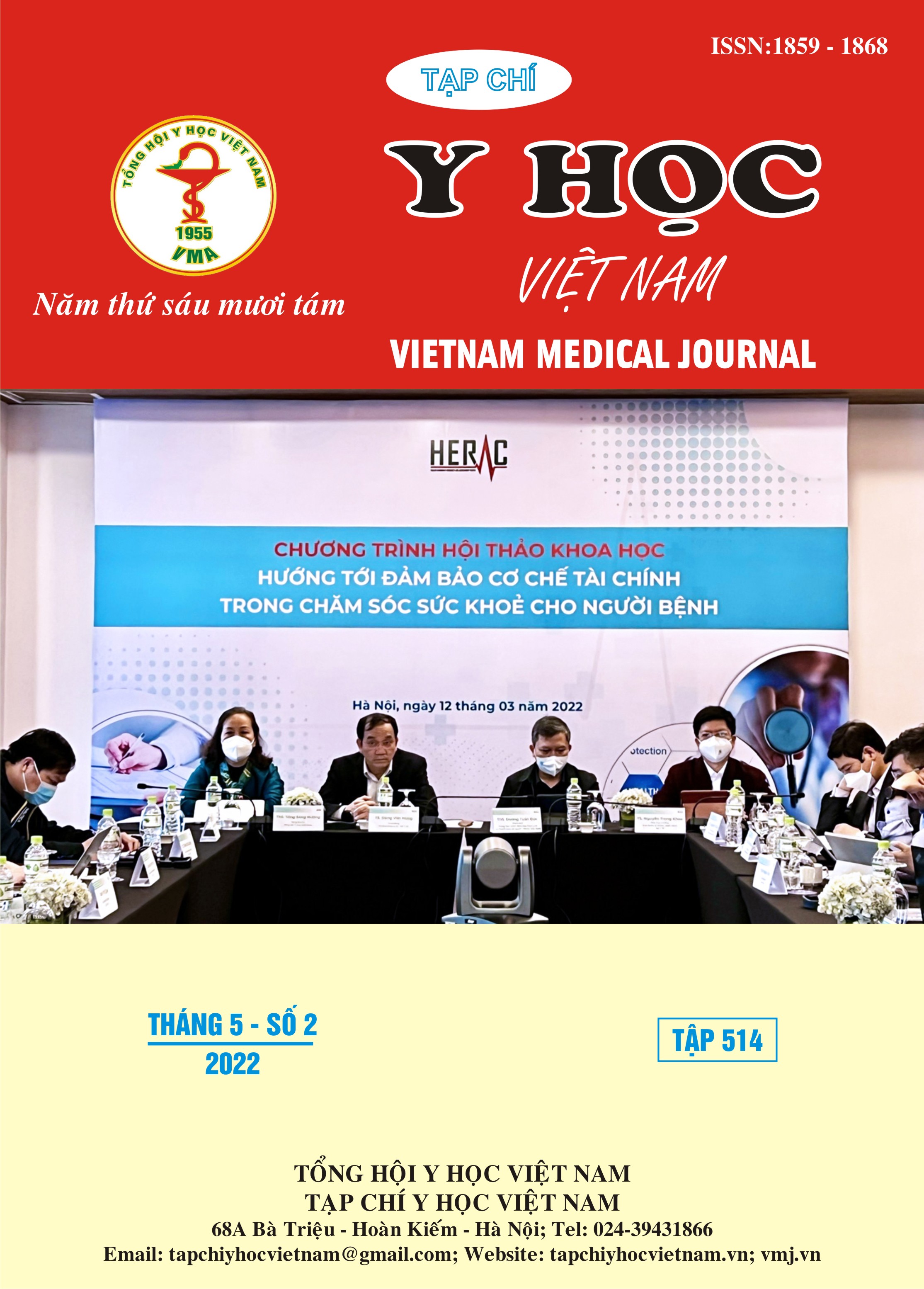YẾU TỐ LIÊN QUAN ĐẾN MỨC ĐỘ TIC THEO THANG ĐO TỔNG QUÁT MỨC ĐỘ NGHIÊM TRỌNG CỦA TIC YALE (YGTSS)
Nội dung chính của bài viết
Tóm tắt
Nghiên cứu được thực hiện với mục tiêu phân tích một số yếu tố liên quan đến mức độ của tic theo thang đo tổng quát mức độ nghiêm trọng của tic Yale (YGTSS). Bằng phương pháp mô tả cắt ngang ở 77 trẻ đến khám lần đầu tiên tại phòng khám chuyên khoa Tâm thần, Bệnh viện Nhi Trung ương, có tuổi dưới 18, được chẩn đoán xác định hội chứng Tourette (F95.2) theo tiêu chuẩn chẩn đoán của ICD 10. Kết quả cho thấy phần lớn Tic khởi phát ở độ tuổi ≤ 7 (62,3%), đa số Tic được chẩn đoán ở độ tuổi 8 – 11 (55,8%). Trẻ nam chiếm đa số (88,3%), tỷ lệ nam/nữ = 7,5/1 (p < 0,01). Dùng kháng sinh, tuổi bố, tuổi mẹ có liên quan có ý nghĩa thống kê đến mức độ tic theo thang đo YGTSS trong mô hình hồi quy tuyến tính. Theo đó, bố tăng thêm 1 tuổi nguy cơ điểm YGTSS tăng thêm 1,6 điểm. Mẹ tăng thêm 1 tuổi, nguy cơ điểm YGTSS tăng thêm 1,7 điểm. Mẹ sử dụng kháng sinh trong thời kỳ mang thai nguy cơ điểm YGTSS tăng 25,8 điểm. Không có mối liên quan giữa con thứ 2 trở lên, đẻ có can thiệp, tuổi thai, cân nặng lúc sinh với điểm thang đo YGTSS. Không có mối liên quan giữa các biến độc lập bao gồm stress của trẻ, triệu chứng khởi phát, ADHD, OCD, chậm phát triển, rối loạn lo âu, số lượng tic với điểm thang đo YGTSS trong mô hình hồi quy tuyến tính.
Chi tiết bài viết
Từ khóa
hội chứng Tourette, yếu tố liên quan, trẻ em
Tài liệu tham khảo
2. Brander G, Rydell M, Kuja-Halkola R, et al. Perinatal risk factors in Tourette’s and chronic tic disorders: a total population sibling comparison study. Mol Psychiatry. 2018;23(5):1189-1197. doi:10.1038/mp.2017.31
3. Bos-Veneman NGP, Kuin A, Minderaa RB, Hoekstra PJ. Role of perinatal adversities on tic severity and symptoms of attention deficit/hyperactivity disorder in children and adolescents with a tic disorder. J Dev Behav Pediatr JDBP. 2010;31(2):100-106. doi:10.1097/DBP.0b013e3181cc7cbc
4. Hoekstra PJ, Dietrich A, Edwards MJ, Elamin I, Martino D. Environmental factors in Tourette syndrome. Neurosci Biobehav Rev. 2013;37(6):1040-1049. doi:10.1016/j.neubiorev.2012.10.010
5. García-López R, Perea-Milla E, Romero-González J, et al. [Spanish adaptation and diagnostic validity of the Yale Global Tics Severity Scale]. Rev Neurol. 2008;46(5):261-266.
6. Freeman RD, Fast DK, Burd L, Kerbeshian J, Robertson MM, Sandor P. An international perspective on Tourette syndrome: selected findings from 3,500 individuals in 22 countries. Dev Med Child Neurol. 2000;42(7):436-447. doi:10.1017/s0012162200000839
7. Yang J, Hirsch L, Martino D, Jette N, Roberts J, Pringsheim T. The prevalence of diagnosed tourette syndrome in Canada: A national population-based study. Mov Disord Off J Mov Disord Soc. 2016;31(11):1658-1663. doi:10.1002/mds.26766
8. Schlander M, Schwarz O, Rothenberger A, Roessner V. Tic disorders: administrative prevalence and co-occurrence with attention-deficit/hyperactivity disorder in a German community sample. Eur Psychiatry J Assoc Eur Psychiatr. 2011;26(6):370-374. doi:10.1016/j.eurpsy.2009.10.003
9. Cubo E, Hortigüela M, Jorge-Roldan S, et al. Prenatal and Perinatal Morbidity in Children with Tic Disorders: A Mainstream School-based Population Study in Central Spain. Tremor Hyperkinetic Mov N Y N. 2014;4:272. doi:10.7916/D8FN14W9


